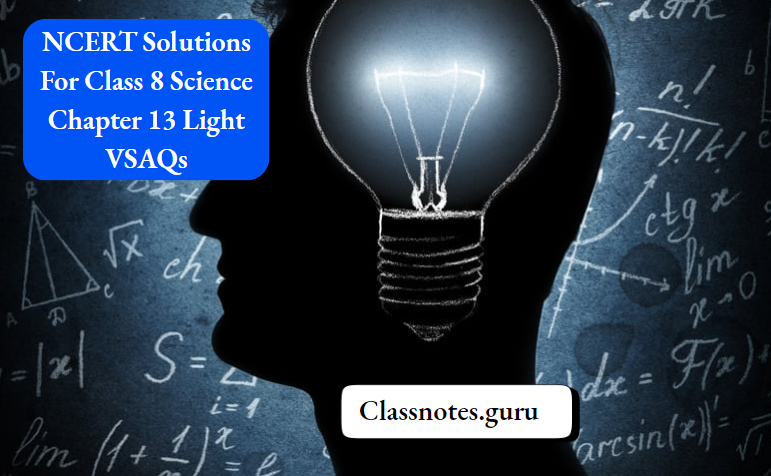NCERT Class 8 Science Chapter 13 Light: Very Short Answer Questions
Question 1. State the functions of rods and cones in our eye.
Answer: Cones are responsible for colour vision, whereas rods are responsible for vision in dim light.
Question 2. Boojho while waving his hand very fast in front of his eyes, observes that his fingers appear blurred. What could be the reason for it?
Answer: Our eyes are not so sensitive for a large speed and when any object is very near, the ciliary muscles cannot focus the object so early.
Question 3. Name the part of the eye that gives colour to the eyes.
Answer: Iris has different colours, so the iris gives its colour to the eyes.
NCERT Class 8 Science Chapter 13 Light VSAQs
Question 4. Do you see any relation between the angle of Incidence and the angle of reflection?
Answer: The angle of incidence is always equal to the angle of reflection.

Question 5. What would happen if we threw the light on the mirror along the normal?
Answer: If we throw the light on the mirror along the normal, the light ray will be reflected in the opposite direction.
Question 6. Can the reflected rays be further reflected if incident on another mirror?
Answer: Yes, the reflected rays can be further reflected if incident on another mirror.

Question 7. Do you know how you could see the hair at the back of your head?
Answer: The reflection of our hair falls onto the mirror at the back and that reflection gets reflected onto the mirror in front of us, whose virtual image again gets reflected into our eyes, and we can see the back ofour hair.
NCERT Solutions for Class 8 Science Chapter 13 Light
Question 8. Can you explain how reflection from the two mirrors enables us to see objects that are not visible directly?
Answer: When light falls on one mirror, it is reflected and falls on the mirror and gets reflected to the observer’s eyes.
Question 9. What happens if two plane mirrors are used in combination?
Answer: When two plane mirrors are used in combination, they will form multiple images for an object.
Question 10. Do we see all objects due to reflected light?
Answer: Yes, nearly everything we see around us is due to reflected light, e.g. moon receives light from the sun and reflects it.
Light VSAQs Class 8 NCERT Solutions
Question 11. What kind of lens is thicker at the centre?
Answer: A Convex lens is thicker in the centre.
